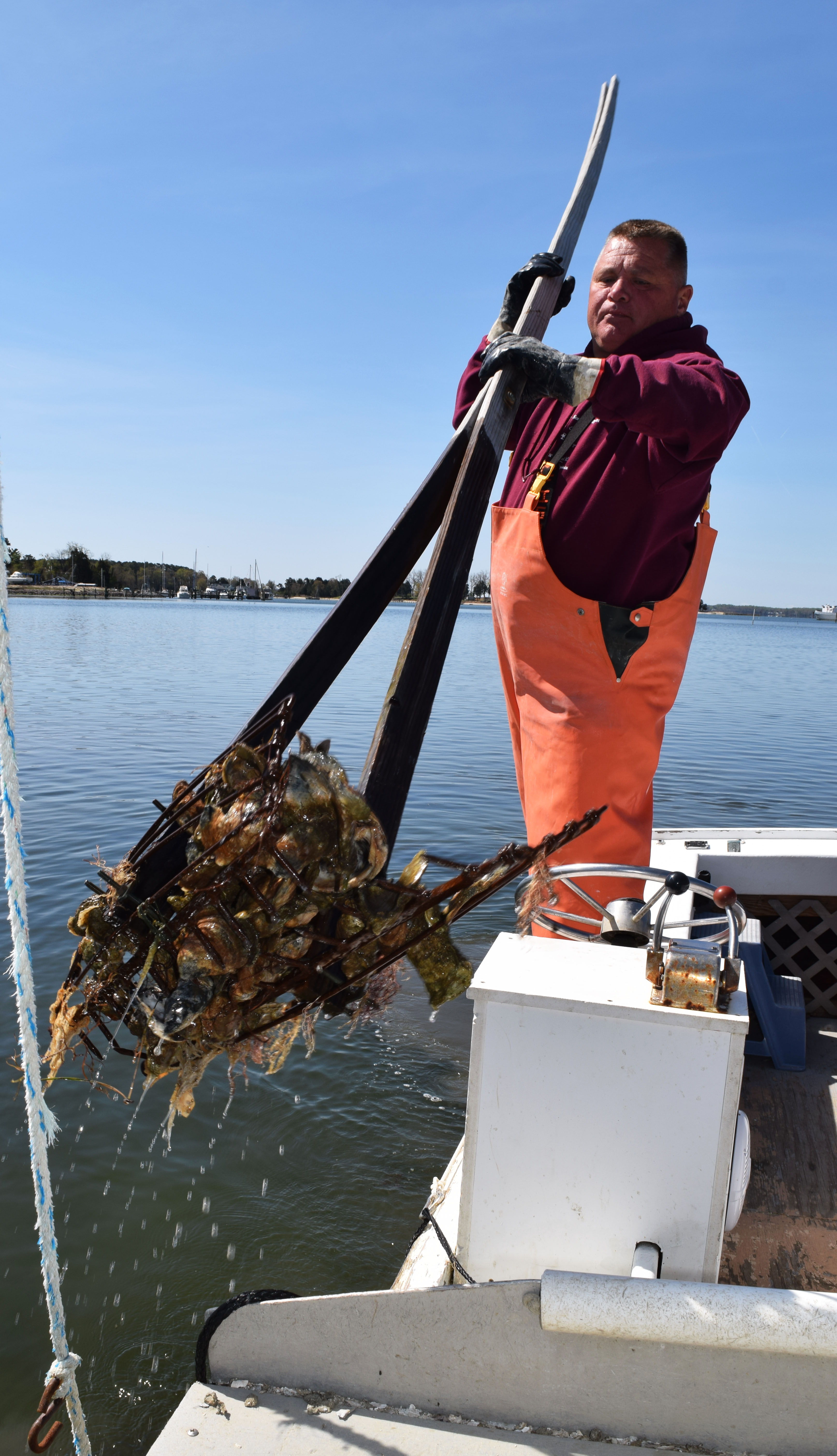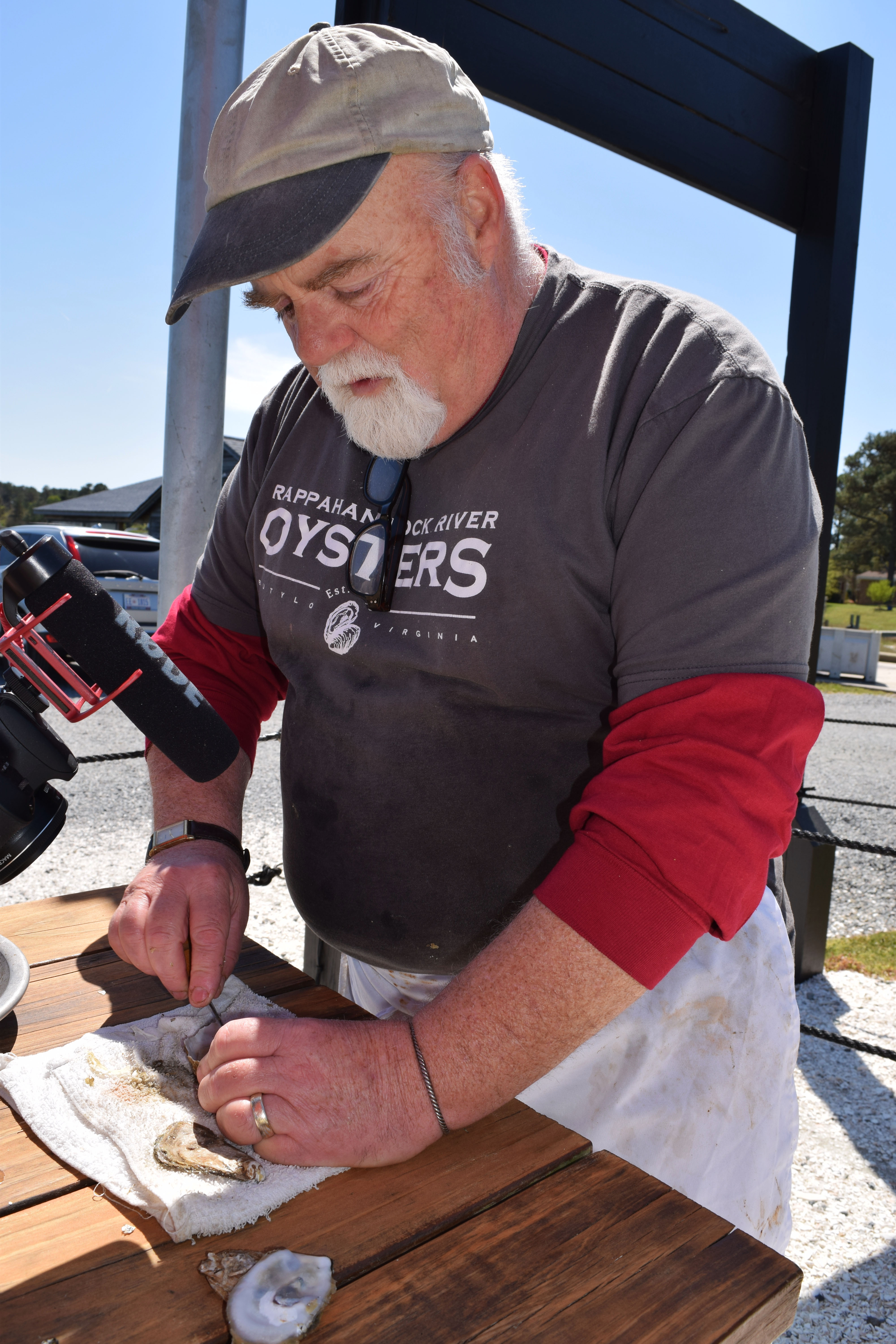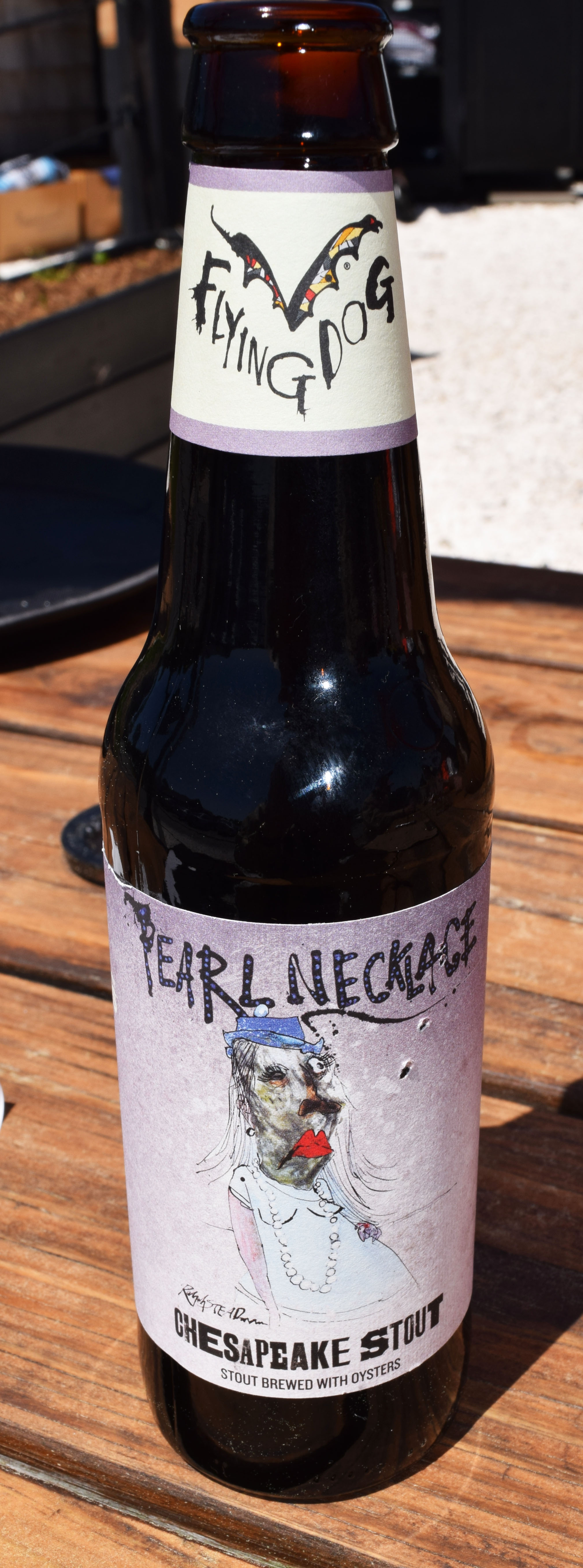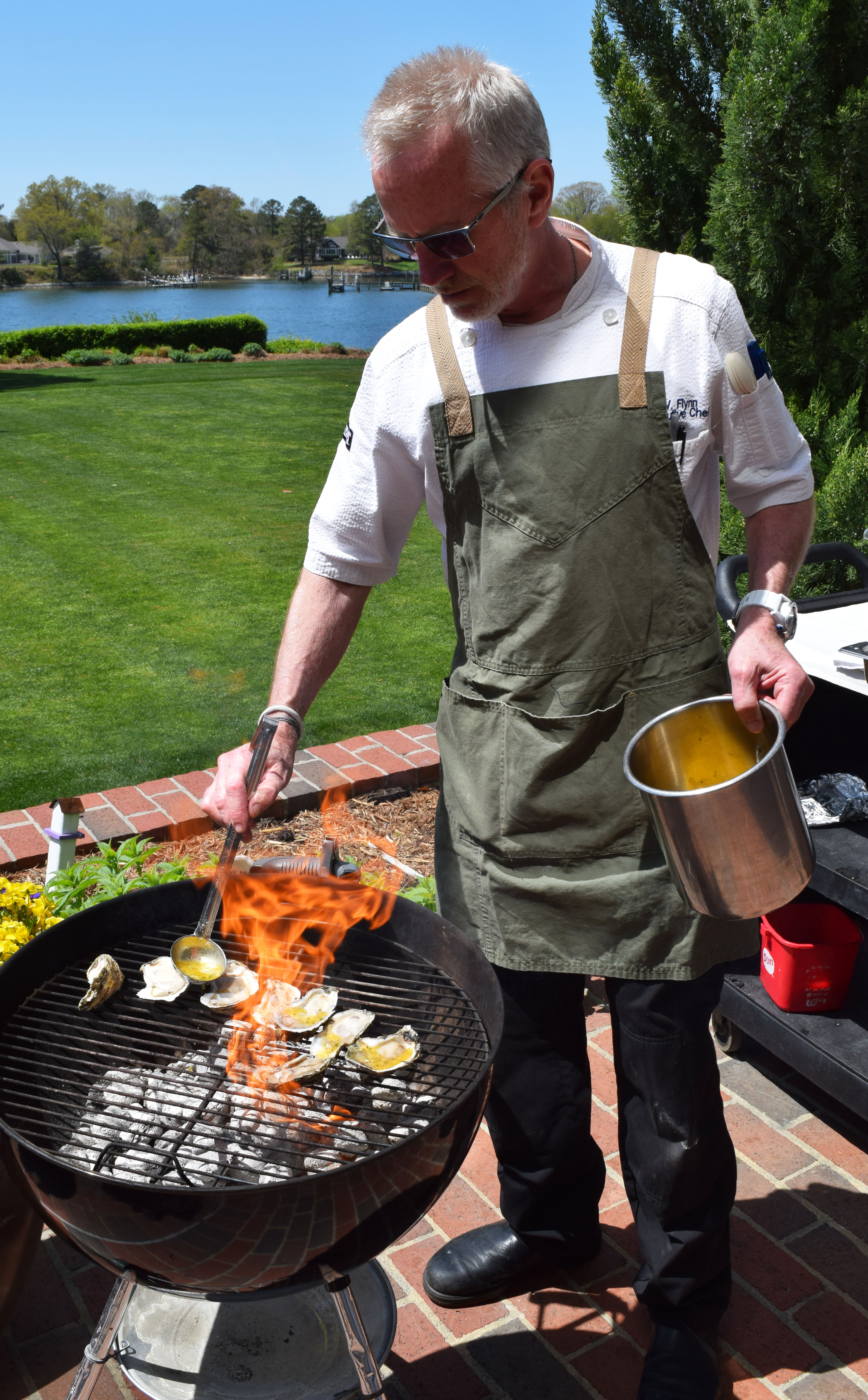TOPPING, VA. — Travis Croxton sticks out his meaty, calloused hand and welcomes me with an enthusiastic emoji smile. His ruddy, boyish face makes him look much younger than his 40-something years. His attire — untucked pink and grey plaid shirt, faded blue jeans and worn sneakers — is not the usual uniform of a business tycoon. But then again, Travis Croxton is not your usual titan of business.
In a hearty southern drawl, he welcomes me to his famous oyster restaurant, Merroir, which sits on the banks of the Rappahannock River in this rural area of Virginia called the Northern Neck.
“So glad you could drop by,” says Croxton, who, along with his cousin Ryan are legends in these parts for helping revive the oyster industry in and around Chesapeake Bay.
Like Travis, Merroir’s looks are also deceiving. Its exterior resembles a roadside shack, complete with slamming screen door. Inside, patrons huddle around small tables on a narrow porch or a cramped bar enjoying lots of shellfish that’s washed down with oyster beer (a tasty brand called Pearl Necklace that is poured over oyster shells during the brewing process). The overflow crowd sit at picnic tables on an el fresco terrace made of crushed oyster shells.


Left: Travis Croxton revived the oyster industry in Virginia. Right: William Saunders harvests oysters the old fashion way.
The kitchen staff, led by an entertaining chap named Peter Woods — he sports a stylish snow-white pointed goatee — works in a shoebox-sized cookhouse that becomes a steam room during Virginia’s sweltering summer months. Appearances aside, People magazine dubbed Merroir “the most popular restaurant in Virginia” and Zagat named it one of its Top 30 restaurants in America.
“On a busy day we serve between 600 and 800 people (many are tourists who come from as far away as Canada),” says Croxton, who opened Merrior as a tasting room next to where he harvests the buttery oysters that feed his main business, the Rappahannock Oyster Co., of Topping, Va.
Croxton is just one of the passionate people in this area who are dedicating their lives to an industry that was on the verge of extinction in the 1980s thanks to overfishing and pollution.
Their efforts and results have been nothing short of miraculous:
• The rivers leading into Chesapeake Bay have all been cleaned up;
• The oyster industry is now one of the Northern Neck’s biggest employers;
• The catch is so bountiful that Travis is hoping to soon export his oysters to countries around the world like China, Japan and Vietnam;
• And tourism here is booming thanks to the number of annual oyster festivals — the state even features an “oyster trail” that introduces visitors to fairy tale Northern Neck towns like Irvington, Kilmarnock and Urbanna, all of which have lots of dollhouse homes and inns.
Travis and Ryan, co-owners of the Rappahannock Oyster Co., now have restaurants in Richmond, L.A. and Washington, and are hoping to soon expand to Houston.

Above: The waters off the Tides Inn are teeming with oysters, many of which end up in the resort's kitchens.
“When we first started you could not see the bottom of the Rappahannock because it was so murky with pollution,” Travis tells me as we look into the river’s now crystal-clear waters where oysters sit on the sandy bottom maturing in cages.
“It wasn’t easy,” remembers Travis, who, along with Ryan gave up well-paying jobs in the financial sector to take up the challenge of aquaculture.
“We used all our savings and maxed out our credit cards to make it work,” says Travis, whose family’s roots in the oyster business date back to the late 1800s when his great grandfather started the Rappahannock Oyster Co.
“Oysters are filter feeders that protect the (Chesapeake) bay and clean the water (oysters filter 50 gallons of water a day). Because of that, and some strict government rules, the rivers (where the oysters are raised) are no longer polluted. Our (farmed) oysters are grown in open waters right next to wild oysters.”
One of Travis’ proudest accomplishments is creating employment in this economically challenged part of Virginia.
“People are returning here from Richmond and other big cities to work in the oyster industry and that makes me very happy,” says Travis as he introduces me to several of his 390 employees, whose backbreaking efforts result in the perfectly shaped, sweetest-tasting oysters this shucker has ever enjoyed.
“It takes 18 months of constant monitoring to get the oysters to market size,” Travis reveals. “The Rappahannock is a great place to farm oysters because of its sandy bottom and its four seasons. It gives our oysters a unique taste.”
The cousins also farm oysters in the York River and the black narrows of Chincoteaguez Bay and raise three types, the mildly salty Rochambeau, the heavily salted and aptly named Olde Salts and, my favourite, the Rappahannock, a deep cupped variety that is sweet and buttery with a crisp, clean finish. Yum!



Above: The Chesapeake Bay oysters are shucked, cooked on a BBQ and washed down with oyster beer - yum!
Travis gets orders from around the world and tells me he ships his oysters in special ice packs (at a constant temperature of 7.2C) to help preserve their freshness.
“Oysters can last up to two weeks using our method,” says Travis, who adds that online orders are up to “70 to 100 per week.”
Travis’ efforts have also created a cottage eco-tourism industry in the Northern Neck. Travellers who come here to enjoy oysters can also learn about its long history by attending the Virginia Oyster Academy run by a delightful woman named Joni Carter at the elegant Tides Inn resort in Irvington.
Carter, a filmmaker (Journey on the Chesapeake for PBS), historian and oyster aficionado, offers some real insight into the industry during a short lecture, and tourists who participate learn things like:
• The Indigenous people introduced Virginia’s first settlers to oysters when they arrived in the 16th century (“The protein from oysters helped save the settlers’ lives in the early days,” Carter tells us.);
• Early settlers consumed at least 10 bushels of oysters annually — pickled, smoked, baked or stewed;
• Waterman is the name given to those who harvest wild oysters in small boats called a deadrise;
• Wars broke out in the 1800s over oysters when northerners and pirates invaded Chesapeake Bay after their own oyster beds dried up;
• Oysters contain zinc, which enhances their reputation as an aphrodisiac;
• There are only five species of oysters (Pacific, Kumamoto, Atlantic, European Flat and Olympia);
• You can tell how old an oyster is by counting the rings;
• Oyster shells have been used to build roads and homes — they were crushed to make mortar and plaster — as well as chicken feed, fertilizer and, at one time currency (early settlers were paid off in oysters);
• While it takes 18 months for oysters to reach market size using aquaculture techniques, it takes almost three years in the wild;
• There is a taste difference between wild and farmed oysters — the wild oysters have a stronger, saltier taste while farmed oysters are milder and more buttery and are preferred by restaurants;
• While oysters can last up to two weeks refrigerated, they are best eaten in three days to ensure freshness.
As part of the academy course, we get to meet an actual waterman, William Saunders, who takes tourists out onto the Rappahannock River to show them how wild oysters are harvested.


Above: Farming the oysters is a long and tedious process involving a lot of people. It takes 18 months for oysters to reach market size.
The crusty Saunders, who has been a waterman since the age of 8, bears the scars of his trade — his face is as tough as leather thanks to the long stretches (“up to 63 days straight on one occasion”) he’s spent on the water.
After picking us up at the Tides Inn dock in Irvington, Saunders, with his small dog Rusty acting as his first mate, heads out into the widest part of the river and dredges the bottom. His hauls include lots of oysters, blue crabs and other sea life. While searching through his catch for the perfect oysters, he grumbles that “watermen get 16 cents each” for their oysters at market while aquaculture producers get “60 cents to $1.20” for theirs. (Aquaculture techniques are much more expensive.)
“Aw, you’ll like this one,” says Saunders, who takes out a sharp knife and pries open a large oyster covered in mud before handing it to me. My mouth jolts alive with the taste of the sea as I quickly devour the salty liquor and meat in one gulp. Delicious!
“Here, have another,” says Saunders, who tosses the open shells back into the river. “It’s important to restock the river with the old shells because the new oysters attach themselves to the shell reefs that form here. In fact, you can get $10 (U.S.) a bag for old shells,” says the man who can harvest up to 4,000 oysters in two hours.
On our way back to the Tides Inn, Saunders tells our small group that Virginia has eight oyster tasting regions and the taste differs in each — “just like wine regions.”
When we dock, The Tides Inn’s head Chef T.V. Flynn is waiting with a tray of chilled oysters, which he roasts on a small barbecue in their own nectar and some melted butter infused with herbs.
One of the most popular items in the inn’s elegant main dining room is Angry Oysters — wild oysters are dredged in breadcrumbs and deep fried before being tossed in a spicy hot sauce. “It’s our take on Buffalo Wings,” says Chef.
Flynn also demonstrates the correct way of opening an oyster without causing serious harm to one’s self — he expertly uses a razor-sharp two inch blade. He also tells us the best oyster shucker in the state is a local woman named Deborah Pratt. She has represented the U.S. at several Oyster Shucking World Championships in Ireland and can shuck and present an oyster in less than five seconds.
“Deborah shucks two dozen in less than two minutes,” Chef tells us.
As Chef’s oysters bubble in their juices on top of the BBQ, William and Rusty head back out to sea. “Don’t forget to give them some of our local wine,” barks Saunders as his tiny boat disappears on the horizon.
Some of the Inn’s wines come from the award-winning Dog and Oyster vineyard just outside Irvington. The boutique, six-acre property grows four varieties of grapes — Chardonel and Vidal Blanc are used for their white wines and Chambourcin and Merlot for the reds.

Above: A traditional oyster man heads out for a day of harvesting on the calm waters in Virgina's Northern Neck.
The vineyard also holds Sip and Slurp events where we get to sample the wine — unexpectedly good — and local oysters under a blue sky canopy amongst the vines.
The owners of the Dog and Oyster also run the charming Hope and Glory Inn in Irvington. The pretty boutique hotel, which looks like it jumped off a Norman Rockwell canvas, has been named one of the Top 10 in America and its fine dining restaurant, the Dining Hall, features some incredibly fresh farm-to-table and boat-to-table cuisine. An old schoolhouse, the inn’s tiny bar is called Detention and it’s the perfect place to end a day after learning so much about Virginia’s incredible oyster industry and the amazing people involved in it.
10 Things We Like About Virginia’s Northern Neck
1 The Tides Inn in Irvington is a perfect place to base yourself in Virginia’s Northern Neck. The chic property offers a homey feel and its oversized rooms offer breathtaking views of the Rappahannock River. It’s perfect for families and offers lots of outdoor activities like sailing and golf. It has a world-class spa, wonderful pool area and its main dining room, the Chesapeake restaurant, serves up oyster and other seafood specialities that are plucked fresh from the surrounding waters. http://www.tidesinn.com
2 There are many fascinating things connected to oysters to Virginia, like Christ Church in Weems, Va. It was built by local legend Robert “King” Carter — the Warren Buffet of the 16th century — whose ancestors included two U.S. presidents, eight Virginia governors and Robert E. Lee. The remarkable church was built with crushed oysters shells serving as its mortar. http://www.christchurch1735.org
3 One of the most popular activities in the Northern Neck each year is the Spring Oyster Crawl that is held in late April. This wine and oyster pairing event is a big draw so plan early. http://www.chesapeakebaywinetrail.com
4 Irvington offers many quaint B&B-style inns and the loveliest is the Hope and Glory on Tavern Rd. The dollhouse inn offers lovely rooms and cottages and started out in 1889 as a schoolhouse. Its quaint bar, Detention, and its Dining Hall restaurant are very cozy. https://www.hopeandglory.com/
5 One of the most charming and interesting towns in the Northern Neck is Kilmarnock, the birthplace of America’s first president, George Washington. The Kilmarnock Farmers Market, held the fourth Saturday of each month, is a Virginia tradition where you get lots of fresh seafood. http://www.kilmarnockva.com/
6 Urbanna is another Northern Neck town filled with history. The quaint fishing village is home to the John Mitchell Map, which was used in Colonial days to determine state boundaries. http://urbanna.com/
7 The Dog and Oyster winery outside Irvington produces some interesting vintages and its rosé is a real winner. http://dogandoyster.com/
8 Colonial Williamsburg, America’s loveliest city, is an hour away from Irvington and well worth the detour.
9 Canadians looking for more travel information on Virginia should go to https://www.virginia.org/Canada
10 The best way to get to Virginia’s oyster region from Toronto or Montreal is via Washington. Air Canada, Porter and WestJet all offer services to Reagan and Dulles. Irvington is a 2.5 hour drive from the U.S. capital.